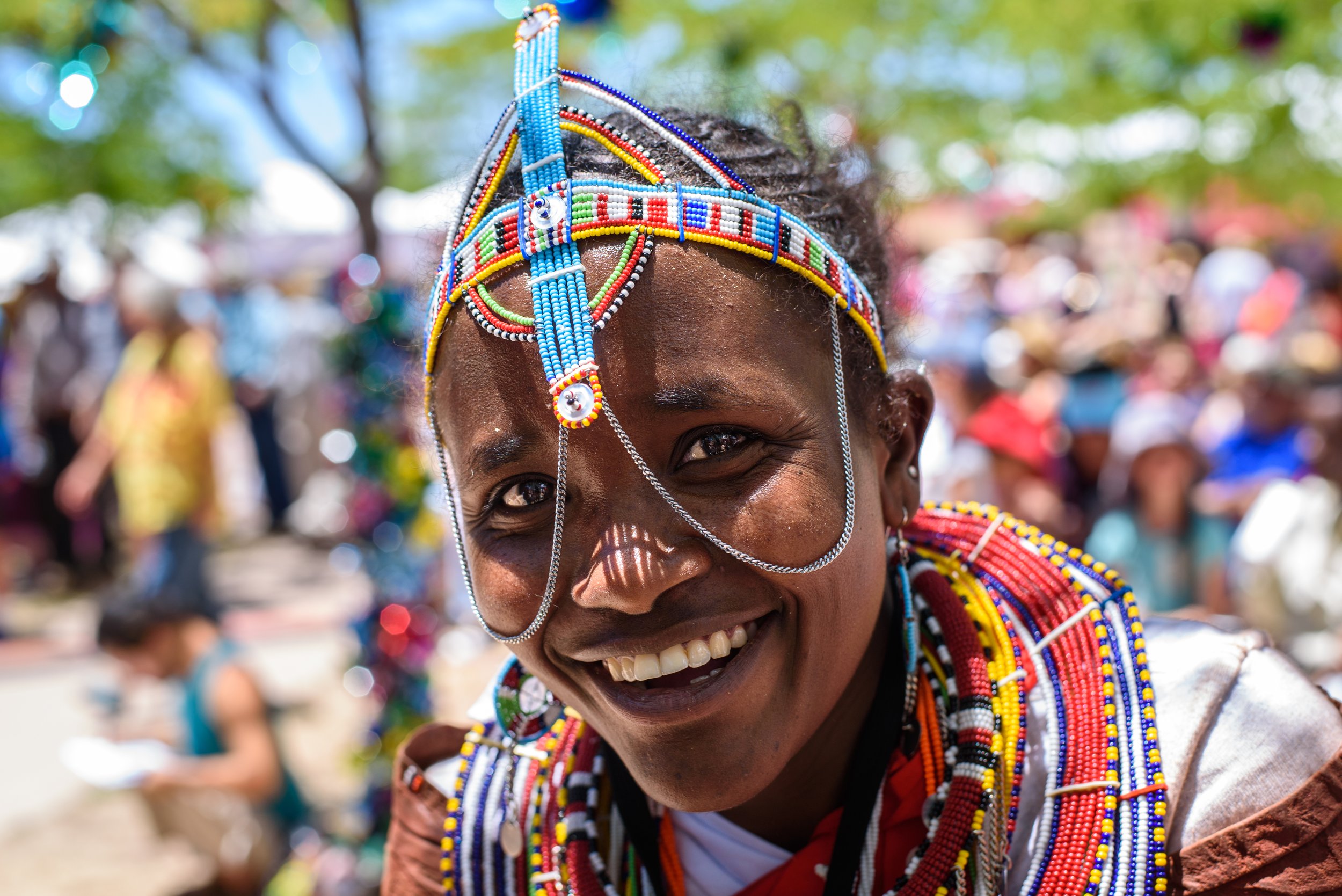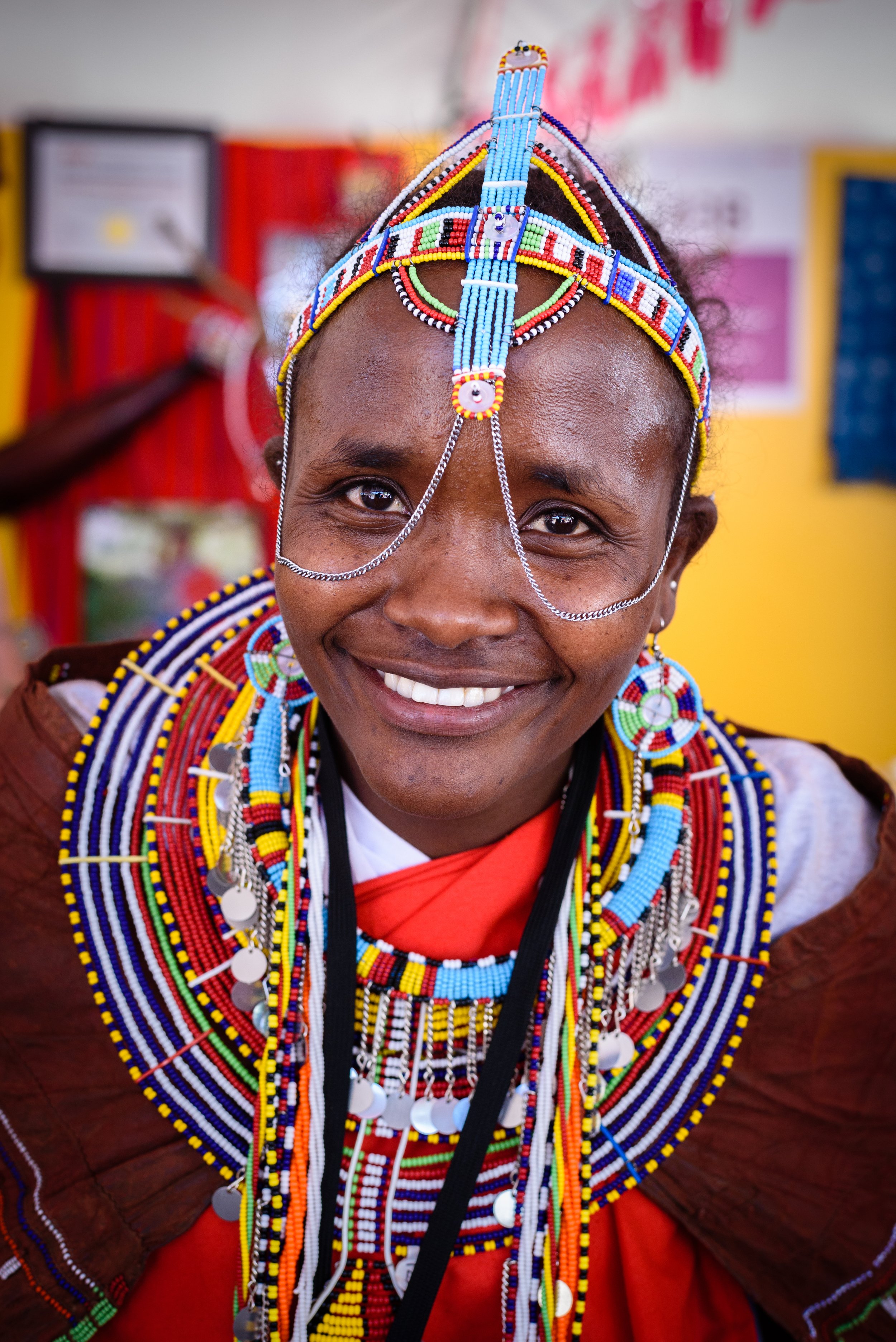Meeri Tuya, Maji Moto Widows Project
A legacy of empowerment through beaded jewelry
Maasai girls are rarely permitted to attend school beyond the elementary grades. They drop out and are married to far older men. Their husbands typically pre-decease them. The outcome for the widows is stigma and hardship. Meeri Tuya was one such Maasai girl. She dropped out of school in the fourth grade to be married. When her 80-year-old husband died, she was newly pregnant. Her father refused her shelter. In 2007, a progressive Maasai chief recognized the plight of widows like Meeri and founded a sanctuary for them on tribal lands.
Today, the Maji Moto Widows Village is home to Maasai widows who are prohibited from remarrying or inheriting or owning land after the deaths of their husbands. Child care responsibilities are shared. Meeri now attends high school. In 2014, she represented the Maji Moto Widows Project at the International Folk Art Market | Santa Fe for the first time.
The Art: The Maasai widows make beaded jewelry and objects in bright and bleached colors that reflect the contrasts found in their environment. Colors and patterns follow generations-old traditions, with different designs used for pieces meant for different age groups. The jewelry is especially striking, with its many dazzling colors, and each bead tells a story about the artist’s life. Beads, leather, seeds, and wire are used in crafting the dazzling bracelets, pendants, and necklaces, including wedding collars, as well as belts and bags.
Before the Maji Moto Widows Project’s first appearance at the Market in 2014, the widows sold their jewelry only to tourists who found their way to the sanctuary camp. Now each woman who contributes jewelry to the project receives some personal income. The rest is pooled into a fund, a kind of giving circle, that the widows collectively decide how to spend. They have used the money to buy food staples in drought years, as well as to pay school fees for Maasai girls.




